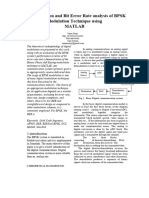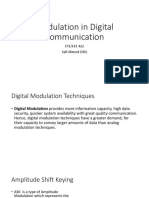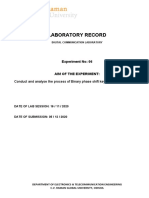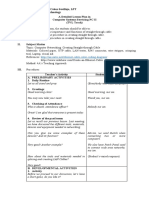0% found this document useful (0 votes)
10 views6 pagesDCL - Experiment - 3
The document outlines the construction and operation of a Binary Phase Shift Keying (BPSK) modulator using an XR2206 integrated circuit. It describes the theory behind BPSK, the generation and reception of BPSK signals, and the procedure for constructing the modulator circuit. The results indicate that the BPSK modulator has been successfully built and the output waveforms have been observed and recorded.
Uploaded by
aadhityavelsamy11Copyright
© © All Rights Reserved
We take content rights seriously. If you suspect this is your content, claim it here.
Available Formats
Download as PDF, TXT or read online on Scribd
0% found this document useful (0 votes)
10 views6 pagesDCL - Experiment - 3
The document outlines the construction and operation of a Binary Phase Shift Keying (BPSK) modulator using an XR2206 integrated circuit. It describes the theory behind BPSK, the generation and reception of BPSK signals, and the procedure for constructing the modulator circuit. The results indicate that the BPSK modulator has been successfully built and the output waveforms have been observed and recorded.
Uploaded by
aadhityavelsamy11Copyright
© © All Rights Reserved
We take content rights seriously. If you suspect this is your content, claim it here.
Available Formats
Download as PDF, TXT or read online on Scribd
/ 6




























































































